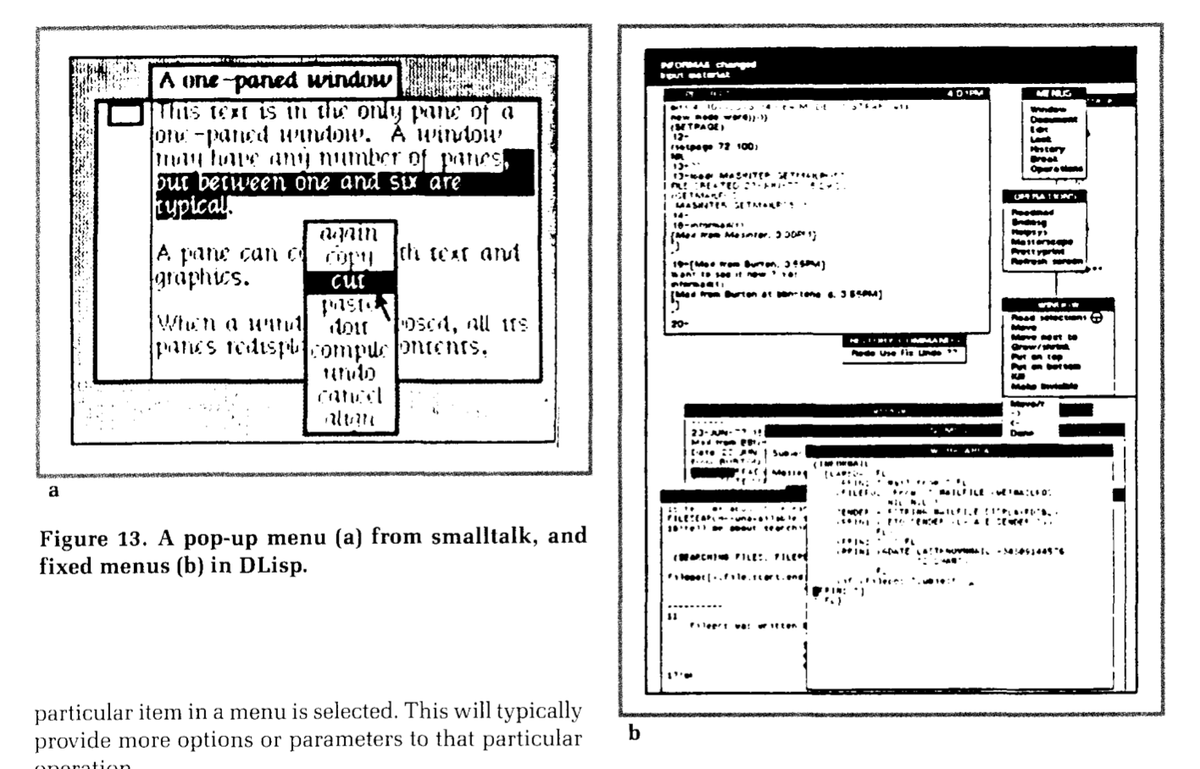
I've been thinking about roads not taken lately, wondering whether we should revisit some of them... 
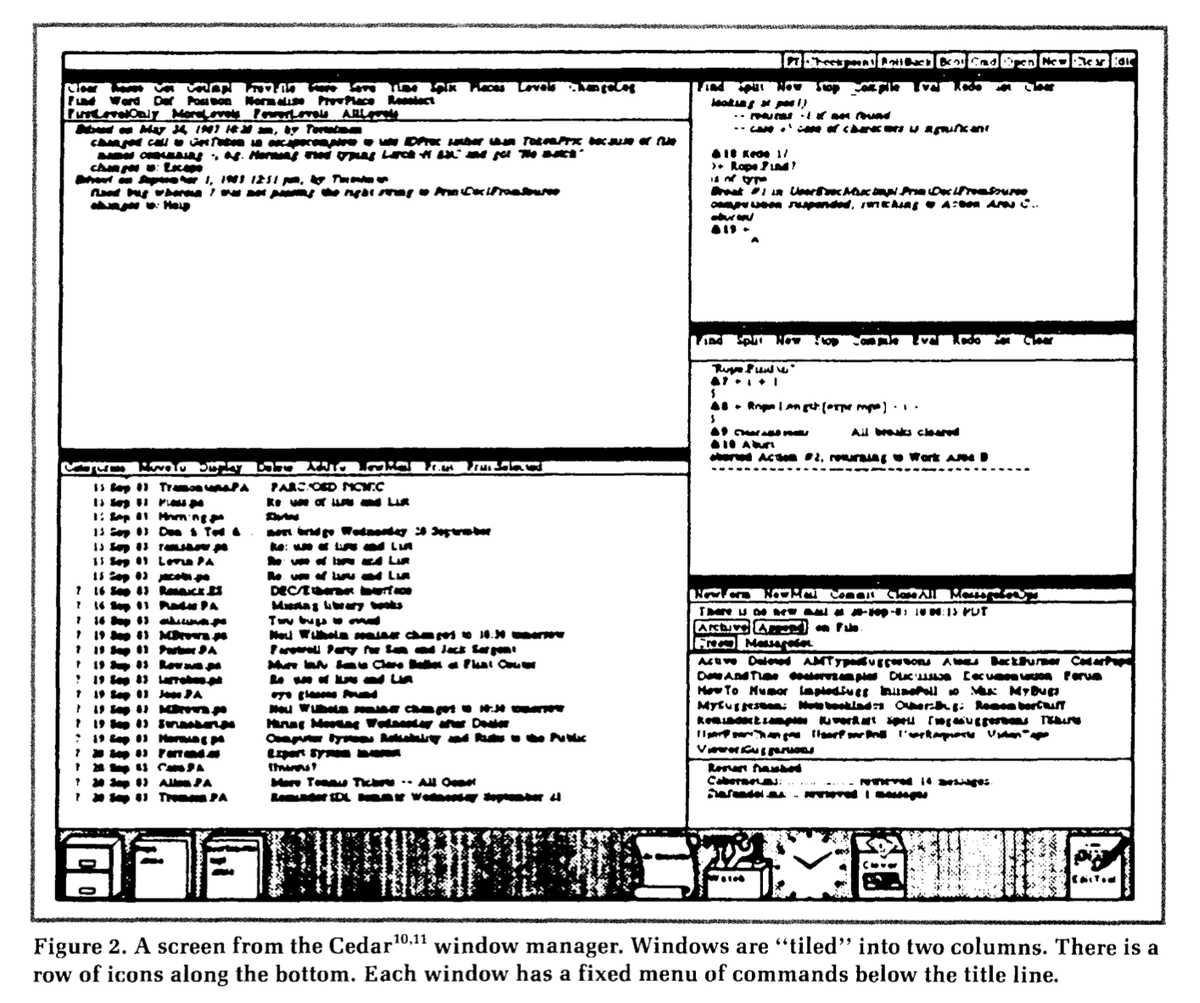
What if windows could be any shape? It's nice when all the graphics are resolution-independent vector drawings, each running in their own threaded Postscript runtime too. 
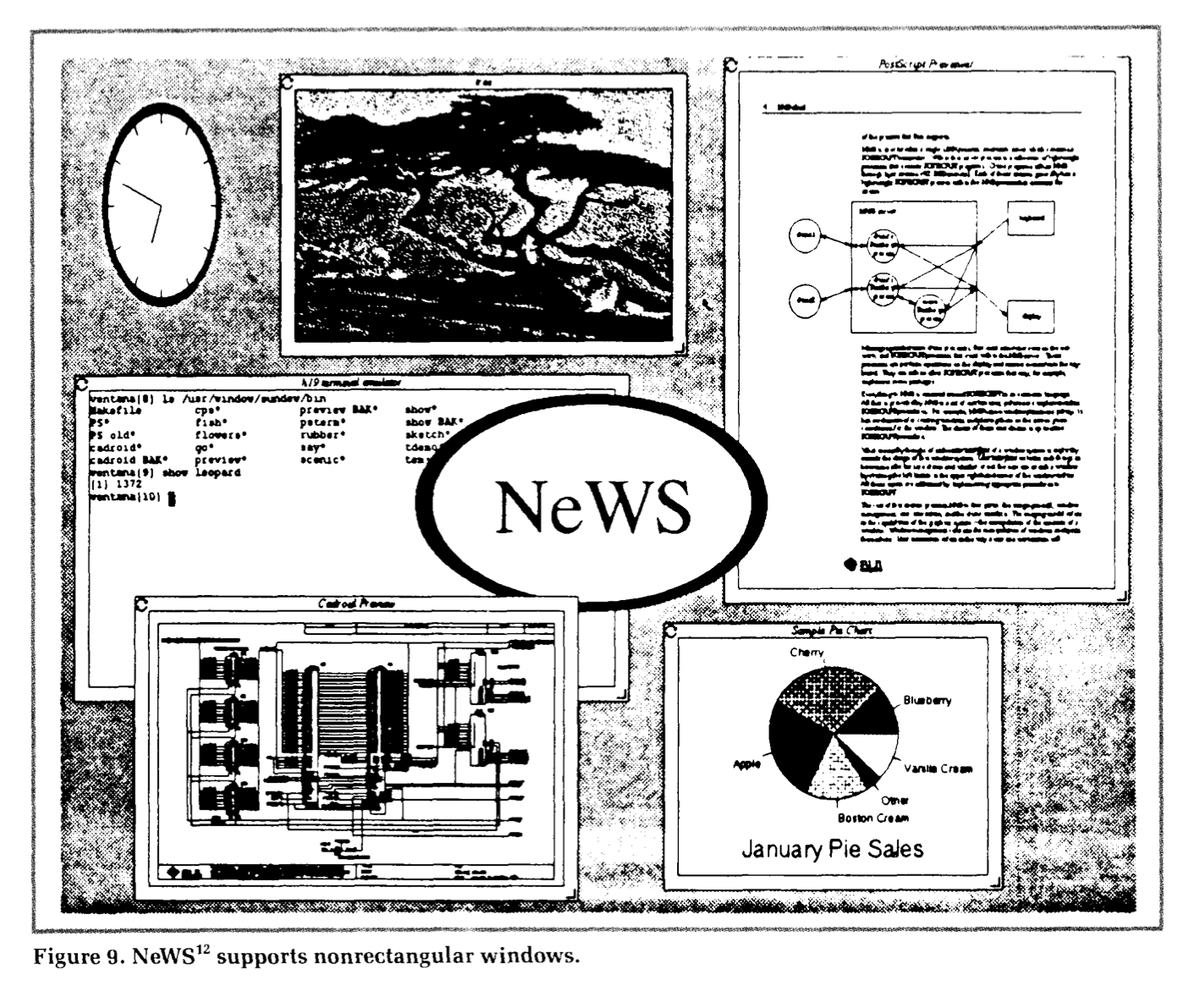
More here from a 1988 roundup of windowing interfaces by Brad Myers:
pdfs.semanticscholar.org/1d8f/4bf085ad8…
pdfs.semanticscholar.org/1d8f/4bf085ad8…
Meanwhile, in France... Centaur was an interactive graphical programming environment written in #Lisp+#Prolog featuring a built-in database, plus auto-generated structure editor, interpreter/debugger, and so on — for whatever language you want.
hal.inria.fr/inria-00075774…
hal.inria.fr/inria-00075774…
More about NeWS and the choice of Postscript for the display here:
chilton-computing.org.uk/inf/literature…
chilton-computing.org.uk/inf/literature…

And an example PS program for NeWS to produce this output:
clippath pathbbox new path
2 div exch 2 div exch translate
250 250 scale 90 rotate
25 (0 .9 moveto 0 0 1 90 -90 arc
0 0 .9 -90 90 arcn fill
.88 .88 scale 22.5 rotate) repeat
clippath pathbbox new path
2 div exch 2 div exch translate
250 250 scale 90 rotate
25 (0 .9 moveto 0 0 1 90 -90 arc
0 0 .9 -90 90 arcn fill
.88 .88 scale 22.5 rotate) repeat

☝🏻Screenshot of Cedar, the other great interactive computing project at PARC (aside from Smalltalk and InterLisp-D), which shows a system of similar spirit built on a strongly typed ALGOL-like language with garbage collection and lightweight processes.
It included early work on editor ergonomics: "[U]sing Tioga as a program editor has several important benefits. First, viewing programs as formatted documents with common typographic conventions makes them easier to read and share."
The OS had a REPL, and one could start several at once and have multiple commands running at the same time. Also: "world-swap" debugger, tiling window manager, version and release management, entity-relationship DB w/ semantic data model, &c.
More:
ics.uci.edu/~andre/ics228s…
More:
ics.uci.edu/~andre/ics228s…

Cedar had a huge influence on Wirth's Oberon, which resembles it more than somewhat. Oberon's TUI (text user interface) had a number of cool extensions based around using a 3-button mouse to interact with text tags in editor windows.
en.wikipedia.org/wiki/Oberon_(o…
en.wikipedia.org/wiki/Oberon_(o…

The TUI innovations in Oberon inspired Plan9's Rio and Acme, which manage to be very alive and malleable without depending on a single programming language. (A uniform filesystem interface and per-process mount tables make this possible).
en.wikipedia.org/wiki/Acme_(tex…
en.wikipedia.org/wiki/Acme_(tex…

Meanwhile, at Stanford, a group built a cool research microkernel OS called V with a windowing system called W (terse team). W was ported to Unix machines, but had terrible performance, which led Bob Scheifler to do an async rewrite that he called... X.
en.wikipedia.org/wiki/V_(operat…
en.wikipedia.org/wiki/V_(operat…

X was simpler but in most other regards worse than NeWS, but it was open source and ran relatively well on the workstations of the day, which is why it won.
(V became Vanguard at Apple's ATG. After Jobs was ousted, they closed the research center.😢)
en.wikipedia.org/wiki/Vanguard_…
(V became Vanguard at Apple's ATG. After Jobs was ousted, they closed the research center.😢)
en.wikipedia.org/wiki/Vanguard_…
And here's a video from 1990 showing a variety of widgets in different systems, including PARC's Bravo (1974), various Smalltalks, Interlisp-D, tStar (1981), Cedar (1982) Symbolics, NeXT, &c:
vimeo.com/61556918
vimeo.com/61556918
Also available from YouTube, with better interface:
Arabic text selection with right-to-left text and left-to-right numerals with Xerox Viewpoint in 1986.
/cc @ra
/cc @ra

Recently, @Conaw asked me about old papers of interest to @RoamResearch. These 7 Issues for the Next Generation of Hypermedia Systems from the 80s should feel quite familiar. Hypermedia computation section very relevant to @sritchie's interests. /cc @mkvlr
citeseerx.ist.psu.edu/viewdoc/downlo…

citeseerx.ist.psu.edu/viewdoc/downlo…
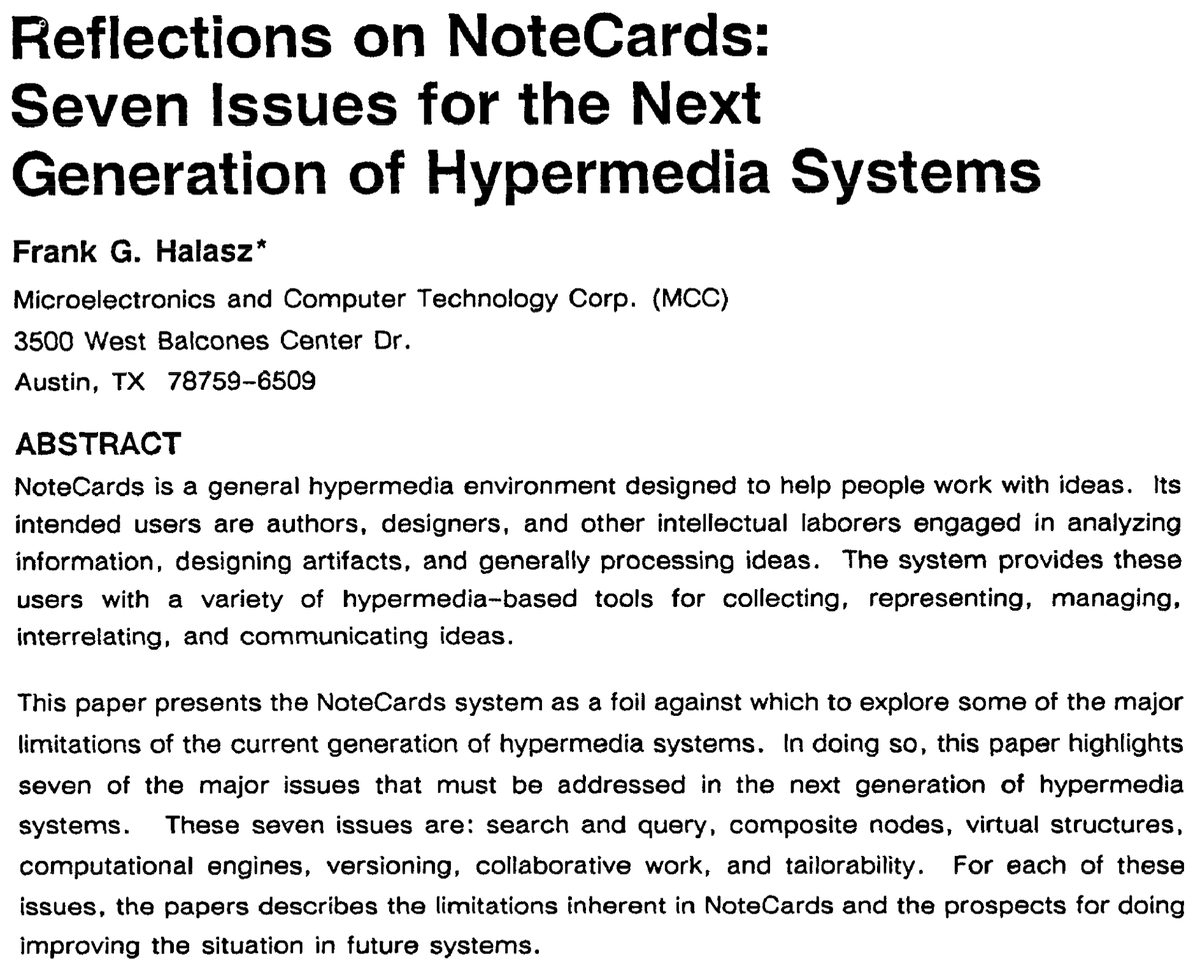
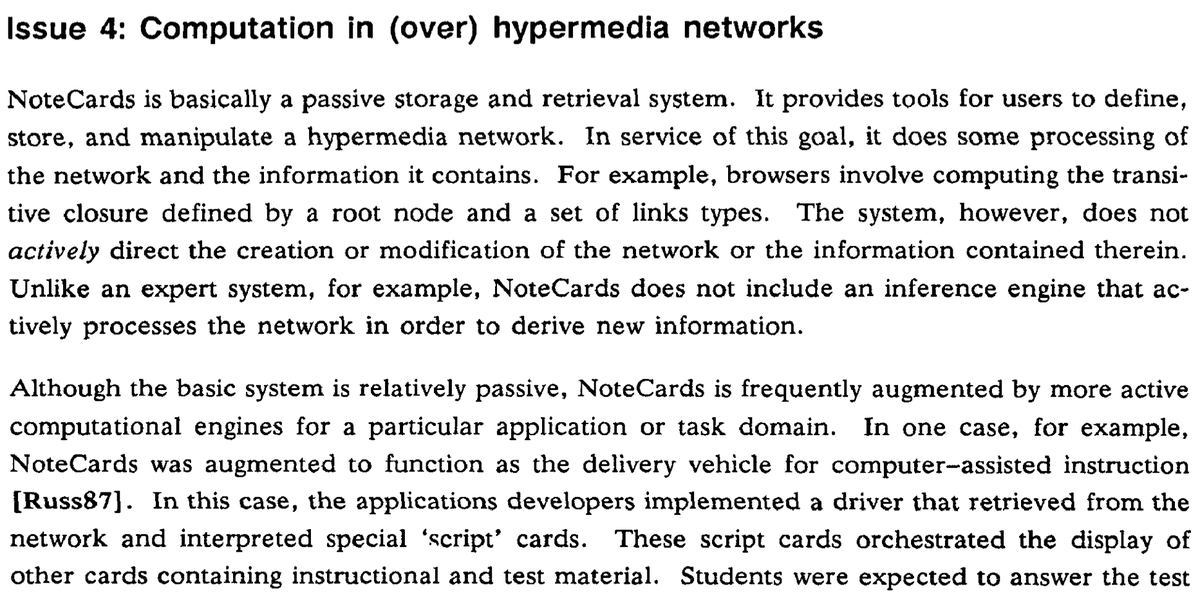
"Don’t Fidget with Widgets, Draw!"
What if there's a graphics server with which you can communicate through a pipe to send/receive scheme s-expressions to build interactive graphical applications?
hpl.hp.com/techreports/Co…
What if there's a graphics server with which you can communicate through a pipe to send/receive scheme s-expressions to build interactive graphical applications?
hpl.hp.com/techreports/Co…
• • •
Missing some Tweet in this thread? You can try to
force a refresh
